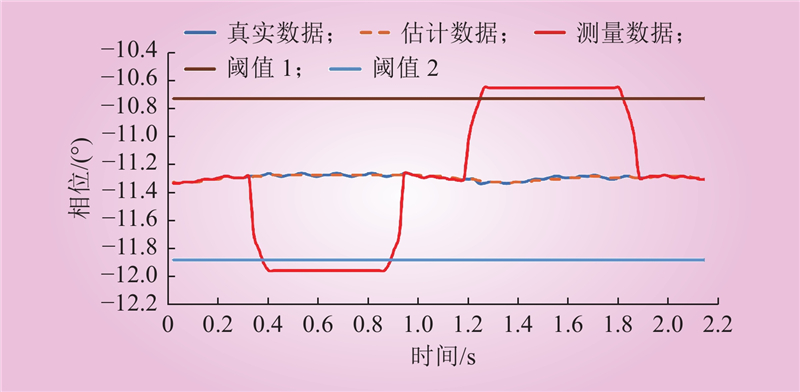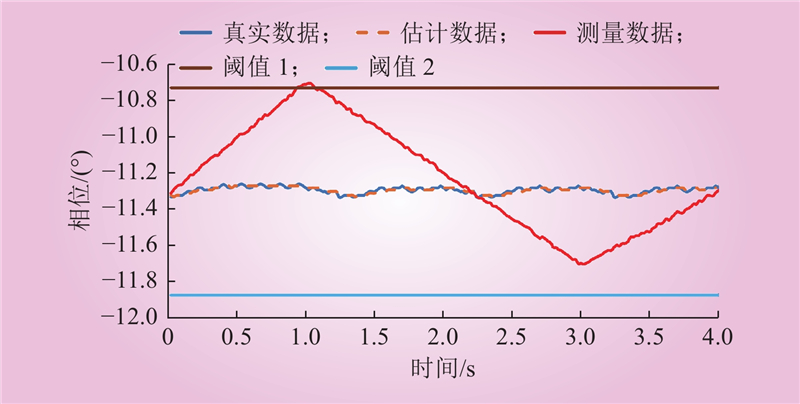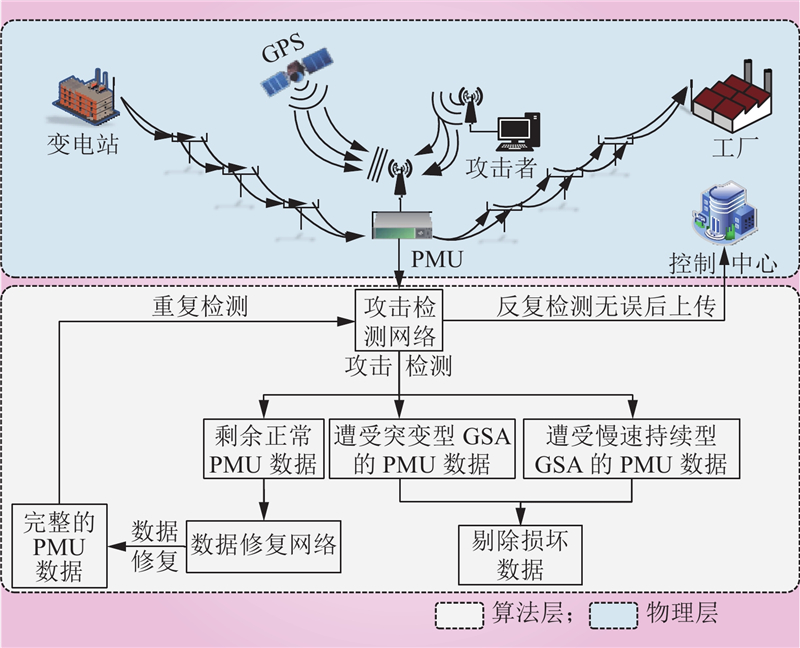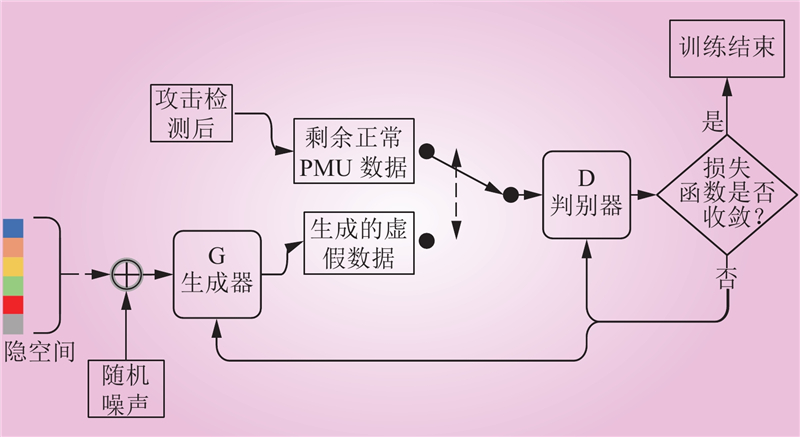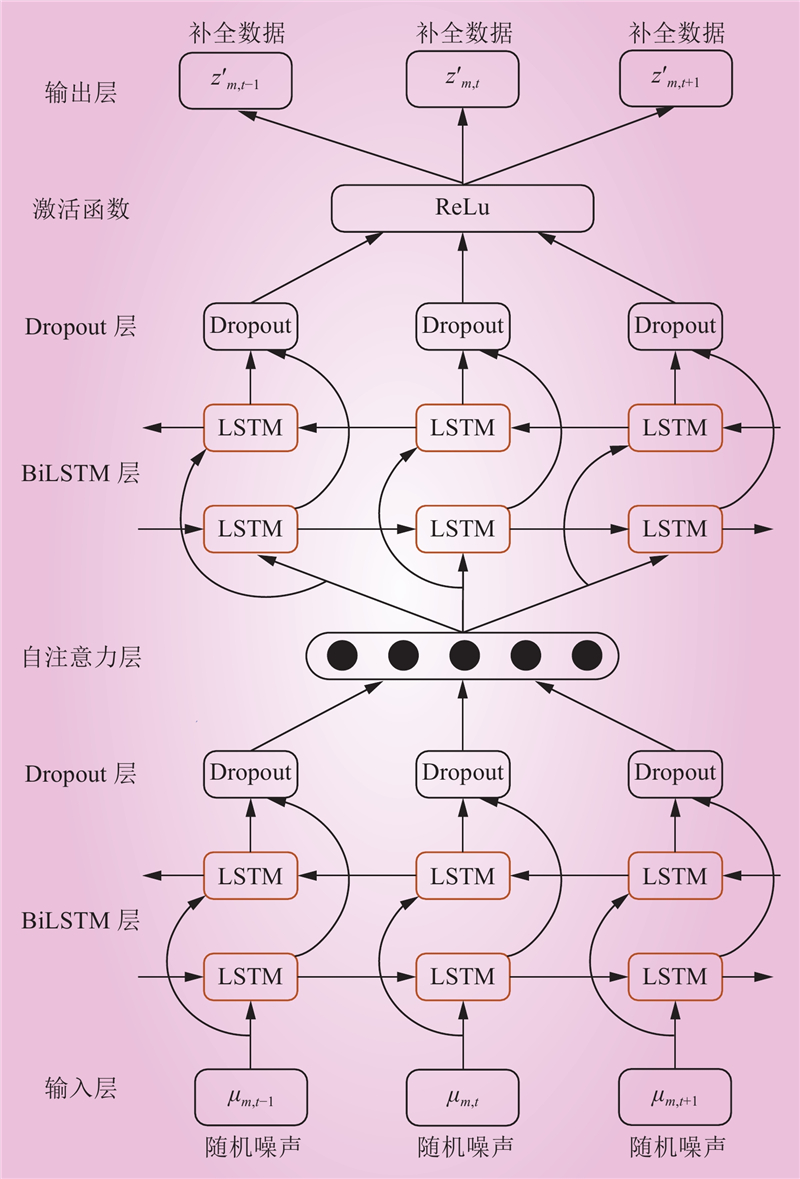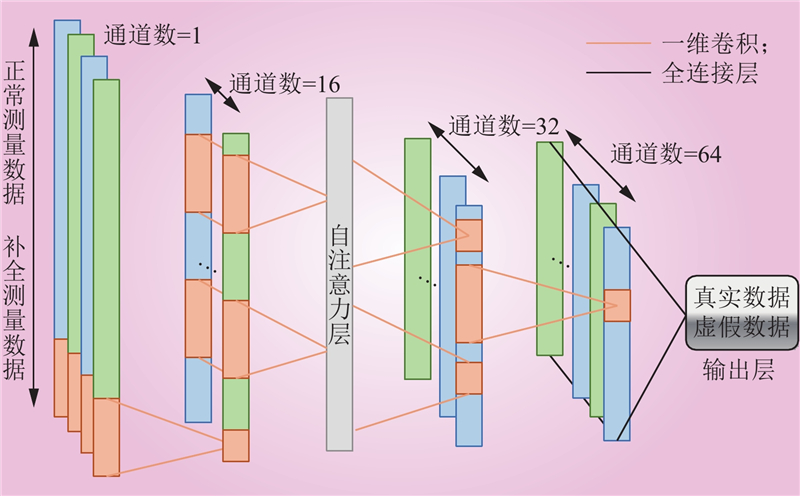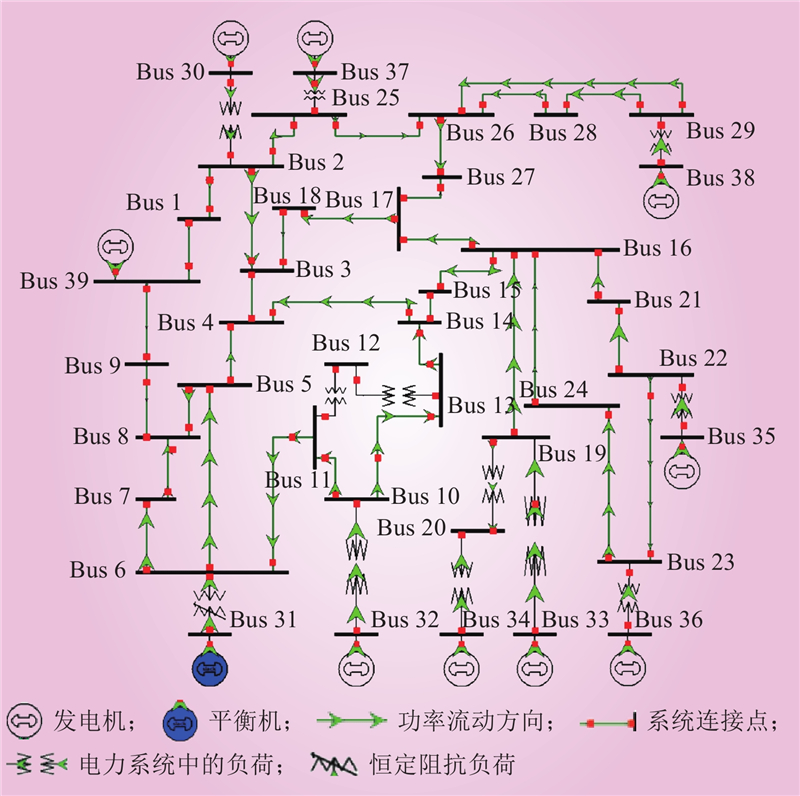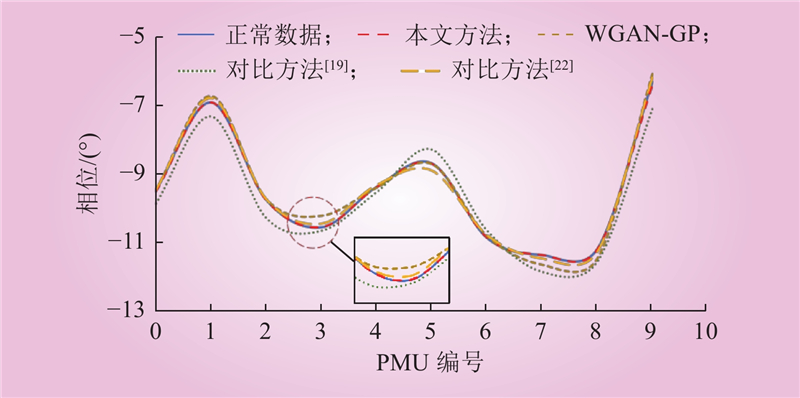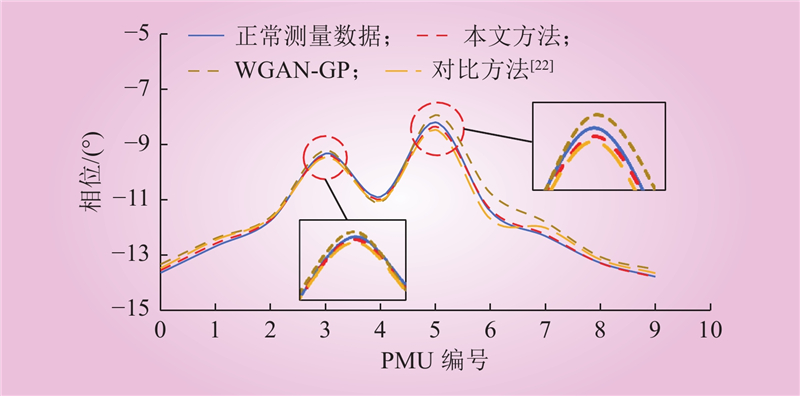| 1 |
CHAUHAN S V S, GAO G X. Synchrophasor data under GPS spoofing: attack detection and mitigation using residuals[J]. IEEE Transactions on Smart Grid, 2021, 12 (4): 3415- 3424.
DOI
|
| 2 |
杨杰, 郭逸豪, 郭创新, 等. 考虑模型与数据双重驱动的电力信息物理系统动态安全防护研究综述[J]. 电力系统保护与控制, 2022, 50 (7): 176- 187.
|
|
YANG Jie, GUO Yihao, GUO Chuangxin, et al. A review of dynamic security protection on a cyber physical power system considering model and data driving[J]. Power System Protection and Control, 2022, 50 (7): 176- 187.
|
| 3 |
XUE A C, XU F Y, XU J S, et al. Online pattern recognition and data correction of PMU data under GPS spoofing attack[J]. Journal of Modern Power Systems and Clean Energy, 2020, 8 (6): 1240- 1249.
DOI
|
| 4 |
ALMUTAIRY F, SCEKIC L, MATAR M, et al. Detection and mitigation of GPS spoofing attacks on phasor measurement units using deep learning[J]. International Journal of Electrical Power & Energy Systems, 2023, 151, 109160.
|
| 5 |
SABOURI M, SIAMAK S, DEHGHANI M, et al. Increasing the resiliency of power systems in presence of GPS spoofing attacks: a data-driven deep-learning algorithm[J]. IET Generation, Transmission & Distribution, 2023, 17(20): 4525-4540.
|
| 6 |
刘依晗, 王宇飞. 新型电力系统中跨域连锁故障的演化机理与主动防御探索[J]. 中国电力, 2022, 55 (2): 62- 72, 81.
|
|
LIU Yihan, WANG Yufei. Exploring the evolution mechanism and active defense of cross-domain cascading failures in new type power system[J]. Electric Power, 2022, 55 (2): 62- 72, 81.
|
| 7 |
韦磊, 徐江涛, 郭雅娟, 等. 基于信任机制的电力无线传感网络安全簇头选举算法[J]. 中国电力, 2023, 56 (8): 61- 67, 76.
|
|
WEI Lei, XU Jiangtao, GUO Yajuan, et al. Trust mechanism based secure cluster head election algorithm for electric power wireless sensor networks[J]. Electric Power, 2023, 56 (8): 61- 67, 76.
|
| 8 |
SHEPARD D P, HUMPHREYS T E, FANSLER A A. Evaluation of the vulnerability of phasor measurement units to GPS spoofing attacks[J]. International Journal of Critical Infrastructure Protection, 2012, 5 (3/4): 146- 153.
|
| 9 |
王晓燕, 杨晶晶, 黄铭, 等. GNSS干扰和欺骗检测研究现状与展望[J/OL]. 信号处理: 1–21[2023-06-14].https://kns.cnki.net/kcms/detail/11.2406.TN.20230613.1343.014.html.
|
|
WANG Xiaoyan, YANG Jingjing, HUANG Ming, et al. Research status and prospect of GNSS jamming and spoofing detection[J/OL]. Journal of Signal Processing: 1–21. [2023-06-14].https://kns.cnki.net/kcms/detail/11.2406.TN.20230613.1343.014.html.
|
| 10 |
LI H, WANG X. Detection of GPS spoofing through signal multipath signature analysis[C]// 2016 IEEE Canadian Conference on Electrical and Computer Engineering (CCECE). IEEE, 2016: 1–5.
|
| 11 |
WEN H, HUANG P Y R, DYER J, et al. Countermeasures for GPS signal spoofing[C]// Proceedings of the 18th international technical meeting of the satellite division of the institute of navigation (ION GNSS 2005). 2005: 1285–1290.
|
| 12 |
RANGANATHAN A, ÓLAFSDÓTTIR H, CAPKUN S. SPREE: a spoofing resistant GPS receiver[C]//Proceedings of the 22nd Annual International Conference on Mobile Computing and Networking. New York City, New York. ACM, 2016: 348–360.
|
| 13 |
GONG S P, ZHANG Z H, TRINKLE M, et al. GPS spoofing based time stamp attack on real time wide area monitoring in smart grid[C]//2012 IEEE Third International Conference on Smart Grid Communications (SmartGridComm). Tainan, Taiwan, China. IEEE, 2012: 300–305.
|
| 14 |
BHAMIDIPATI S, KIM K J, SUN H B, et al. GPS spoofing detection and mitigation in PMUs using distributed multiple directional antennas[C]//ICC 2019-2019 IEEE International Conference on Communications (ICC). Shanghai, China. IEEE, 2019: 1–7.
|
| 15 |
MAGIERA J, KATULSKI R. Detection and mitigation of GPS spoofing based on antenna array processing[J]. Journal of Applied Research and Technology, 2015, 13 (1): 45- 57.
DOI
|
| 16 |
YANG L, LI Y, LI Z. Improved-ELM method for detecting false data attack in smart grid[J]. International Journal of Electrical Power & Energy Systems, 2017, 91, 183- 191.
|
| 17 |
WANG J X, TU W T, HUI L C K, et al. Detecting time synchronization attacks in cyber-physical systems with machine learning techniques[C]//2017 IEEE 37th International Conference on Distributed Computing Systems (ICDCS). Atlanta, GA, USA. IEEE, 2017: 2246–2251.
|
| 18 |
LI Y C, YANG S S. GPS Spoofing attack detection in smart grids based on improved CapsNet[J]. China Communications, 2021, 18 (3): 174- 186.
DOI
|
| 19 |
FAN X Y, DU L, DUAN D L. Synchrophasor data correction under GPS spoofing attack: a state estimation-based approach[J]. IEEE Transactions on Smart Grid, 2018, 9 (5): 4538- 4546.
DOI
|
| 20 |
RISBUD P, GATSIS N, TAHA A. Vulnerability analysis of smart grids to GPS spoofing[J]. IEEE Transactions on Smart Grid, 2018, 10 (4): 3535- 3548.
|
| 21 |
WU Z Y, ZORA L T, PHADKE A G. Simultaneous transmission line parameter and PMU measurement calibration[C]//2015 IEEE Power & Energy Society General Meeting. Denver, CO, USA. IEEE, 2015: 1–5.
|
| 22 |
李元诚, 杨珊珊. 基于改进自注意力机制生成对抗网络的智能电网GPS欺骗攻击防御方法[J]. 电力自动化设备, 2021, 41 (11): 100- 106.
|
|
LI Yuancheng, YANG Shanshan. Defense method of smart grid GPS spoofing attack based on improved self-attention generative adversarial network[J]. Electric Power Automation Equipment, 2021, 41 (11): 100- 106.
|
| 23 |
RISBUD P, GATSIS N, TAHA A. Multi-period power system state estimation with PMUs under GPS spoofing attacks[J]. Journal of Modern Power Systems and Clean Energy, 2020, 8 (4): 597- 606.
DOI
|
| 24 |
SABOURI M, SIAMAK S, DEHGHANI M, et al. Intelligent GPS spoofing attack detection in power grid[C]//2021 11th Smart Grid Conference (SGC). Tabriz, Iran, Islamic Republic of. IEEE, 2021: 1–6.
|
| 25 |
PAL S, SIKDAR B, CHOW J H. Classification and detection of PMU data manipulation attacks using transmission line parameters[J]. IEEE Transactions on Smart Grid, 2018, 9 (5): 5057- 5066.
DOI
|
| 26 |
WU Y R, YIN H, QIU W, et al. Optimal PMU design based on sampling model and sensitivity analysis[J]. International Journal of Electrical Power & Energy Systems, 2023, 148, 109004.
|
| 27 |
XIA X F, LIN J, JIA Q N, et al. ETD-ConvLSTM: a deep learning approach for electricity theft detection in smart grids[J]. IEEE Transactions on Information Forensics and Security, 2023, 18, 2553- 2568.
DOI
|
| 28 |
GREFF K, SRIVASTAVA R K, KOUTNIK J, et al. LSTM: a search space odyssey[J]. IEEE Trans Neural Netw Learn Syst, 2017, 28 (10): 2222- 2232.
DOI
|
| 29 |
MOUNIR N, OUADI H, JRHILIFA I. Short-term electric load forecasting using an EMD-BI-LSTM approach for smart grid energy management system[J]. Energy and Buildings, 2023, 288, 113022.
DOI
|
| 30 |
HE J L, ZHANG Z J, MA L R, et al. InFocus: amplifying critical feature influence on non-intrusive load monitoring through self-attention mechanisms[J]. IEEE Transactions on Smart Grid, 2023, 14 (5): 3828- 3840.
DOI
|
| 31 |
LI Y, WEI X H, LI Y Z, et al. Detection of false data injection attacks in smart grid: a secure federated deep learning approach[J]. IEEE Transactions on Smart Grid, 2022, 13 (6): 4862- 4872.
DOI
|
| 32 |
SUN C H, ZHANG X H, MENG H Y, et al. AC-WGAN-GP: generating labeled samples for improving hyperspectral image classification with small-samples[J]. Remote Sensing, 2022, 14 (19): 4910.
DOI
|


